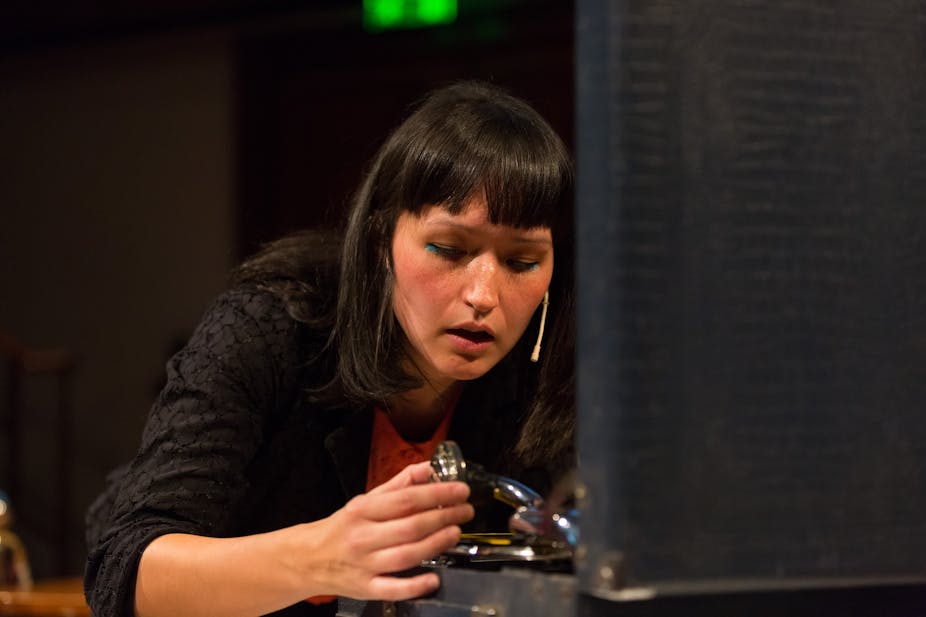Ada Lovelace day falls on the second Tuesday of October every year – it is a time to celebrate the achievements of women in STEM subjects: science, technology, engineering and mathematics. But who was Ada Lovelace and why choose a Victorian titled lady as a champion for today’s potential heroes?
Countess Lovelace (Augusta Ada Byron) was born in 1815, yet we celebrate her today as the world’s first programmer, or possibly as its first debugger. In 1843 she wrote a paper about a computer called the Analytical Engine that was never even built. That didn’t matter. The machine was designed to solve mathematical problems. She was able to understand how solutions to those problems could be broken down into simple steps that could be given to the machine to execute.

Why is she our hero? She was smart. She pursued her interest in mathematics even though that was extremely unusual for a woman of her time. She had dogged determination in solving problems. She was able to understand the Analytical Engine and wrote a “A Sketch of the Analytical Engine” with extensive notes explaining its operation more clearly for a wider audience. In some ways she knew more about the machine than its inventor, Charles Babbage, did. She detected an error in instructions written by him for the machine. Most importantly, she had insight and realised that Babbage’s machine was capable of much more than its original purpose of numerical calculations. If it could manipulate numbers it could just as easily manipulate words or even music. As she wrote:
[The Analytical Engine] might act upon other things besides number … for instance … the fundamental relations of pitched sounds in the science of harmony and of musical composition … the engine might compose elaborate and scientific pieces of music of any degree of complexity or extent.
For many years Lovelace’s achievements were ignored: in part because computers (general purpose machines to solve all sorts of problems) were not built until the 1940s. Her name was resurrected by Alan Turing in his famous paper, “Computing Machinery and Intelligence”, in which he talked about Lovelace’s objection to artificial intelligence – that computers are not capable of originating anything and can do only what we instruct them to.
Turing is another key figure in the history of computing who has been more recently acclaimed as a true hero due to his work on wartime cryptography, on understanding biology through mathematics, and on some really elegant theory on what is and is not possible for a computer to do.
Why are heroes important? We need to inspire future ones. We all need role models to look up to, to show how great human achievement can be. And we need role models who somehow “look like us”. Lovelace is an important hero – for men too but especially for women in computing, and in STEM more widely, as a woman who succeeded at a time when women were not at all encouraged into education, let alone science.
Diversity is important in science: we need teams composed of all sorts of people, bringing different perspectives, to solve problems. Not only that, companies with more diverse teams are shown to be more profitable. A 2015 McKinsey report found that “companies in the top quartile of gender diversity were 15% more likely to have above median financial returns, relative to their national industry median”.

So it’s a real problem for us that there are low numbers of women in computing (15% undergraduates), mathematics (39% undergraduates), physical sciences (39% undergraduates) and engineering (15% undergraduates), according to HESA, which collects data on higher education in the UK. Although biological sciences have more women at undergraduate level (59%) this drops at more senior levels, suggesting women are moving out of the subject. You might say that says more about talent and inclination – women just don’t want to do these subjects – but that would be wrong. It’s a societal problem that women are being put off: the UNESCO/OECD 2015 Yfactor report showed women are represented more equally in STEM subjects in the Middle East, North Africa, and south and west Asia.
So we must do more to promote STEM careers for women. There are lots of terrific organisations out there who already run talks and workshops and hackathons and taster events for young people to find out what STEM means. Your local school, college or university may run an after-school coding club. There are local science fairs that aim to reach out and show how scientists are changing our world. These are great places to meet scientists who love to talk about their work with others. For girls, particularly look out for Stemettes, ScienceGrrl, Code First: Girls and TechFuture Girls.
What other actions can help? We need prominent role models and advocates of STEM to demonstrate a wider range of “what a scientist looks like”. A new MRC awards scheme to promote modern female heroes of computing and mathematics launches on Ada Lovelace Day 2016. These will recognise women first for their scientific achievements, but also as leaders in their field who are inspiring others. While Lovelace encourages us to showcase these women, women in STEM shouldn’t just be promoted on a single day. Women are doing fantastic work every day – and society needs the next generation of scientists to take up the baton for the future.

